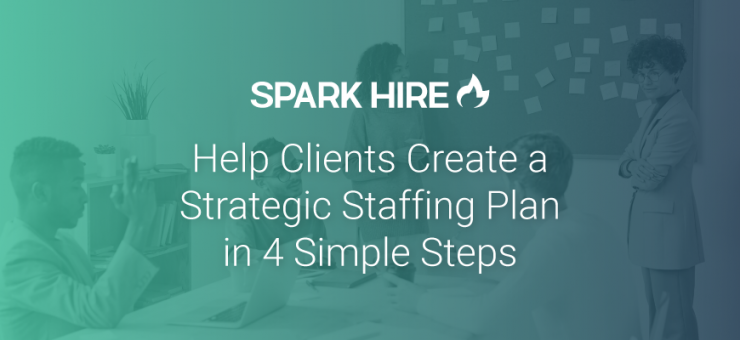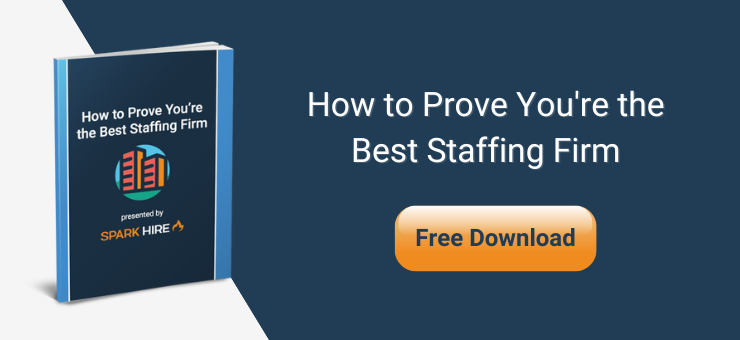Thomas P. Bechet defines strategic staffing as “the process that organizations use to identify and address the staffing implications of their business strategies and plans” in his book Strategic Staffing: A Comprehensive System for Effective Workforce Planning, Second Edition.
While you know the importance of a strategic staffing plan, organizational leaders aren’t generally well-versed in resolving staffing conflicts. They know staffing is a significant problem, and they’re aware a staffing strategy would decrease many of those concerns. Unfortunately, they don’t understand how to form practical solutions.
That is where you come in as their prime staffing resource. The challenge, however, lies in bringing key staffing pain points to the surface to help them see the direct value of creating a custom strategy.
Here are a few ways you can help clients create a strategic staffing plan and increase their hiring success:
Know their business inside and out
You can’t help clients create strategic staffing plans if you don’t understand their goals and common hurdles. Often, when you onboard a client, they focus specifically on their staffing-related challenges. A strategic staffing plan, however, must be all-encompassing.
Resources such as The Bureau of Labor Statistics are useful in showing industry and role-specific trends. This information helps you know their industry inside and out. But then, you must narrow your focus to identify the ins and outs of their company and understand their business and staffing needs compared to the industry standard.
For example, your client’s goal to grow their business by 20% in five years is an overall business goal. To accurately create a plan to meet their future staffing needs, you need to know why and by how much their staff needs to increase to support this goal.
Perhaps their growth is attached to a new product. In the immediate future, they may need increased staff in research and development. As they move forward, an increase in manufacturing will occur. Eventually, they’ll need more employees in customer service, sales, and marketing. These details offer key insights into the steps, roles, and hiring timelines your client needs to incorporate into their strategic staffing plan.
Conduct a gap analysis
A gap analysis shows current staffing compared to what needs to be filled, giving direct data to clients’ staffing demands. This helps your clients understand employee gaps in their company before creating a strategic staffing plan.
Once you’ve identified the gap, challenge clients to determine what’s causing those gaps:
- Is there a lack of training and development?
- Are turnover rates for those roles high?
- Are staffing demands met during seasonal hiring?
- Are employees looking for promotions externally?
Summarize their responses to make strategic recommendations for their staffing plan. If turnover rates are high for specific roles, for example, they may need to reassess the job description to ensure employees fully understand role requirements before starting the role.
Review past staffing patterns
As you know, many clients aren’t aware of their past staffing patterns. While this metric is a primary focus for you, they also must understand how to interpret staffing patterns to create actionable steps for future goals.
Bring frequent staffing patterns to light by looking for these common patterns:
- Typical times when more temporary help is needed
- Years when they amped up regular employee hiring
- Times when regular employees were laid off
- The common time of year they lay off temporary employees
These details help clients balance their strategic staffing plans. The more insight they have into staffing patterns, the easier it is to prepare for trends and get ahead of their needs.
Strategize for current and future needs
Once the initial analysis and review are over, it’s time for clients to tap into leaders, hiring managers, and HR to access more in-depth information. For instance, hiring managers may have more specific explanations for employee gaps, or they might view current staffing needs differently from what the gap analysis revealed.
Together, these key leaders should be able to put a plan in place. Use your expertise to guide them as they form new staffing goals. Also, based on their pain points, be sure to suggest tools to increase their success in making those goals a reality. For example, if company leaders struggle to book interviews and coordinate schedules, discuss the importance of an interview scheduling tool.
When they have their strategy in place, compare it to your plans for the company. Ensure your talent pipeline has the type of candidates they need and can keep up with future demands.












